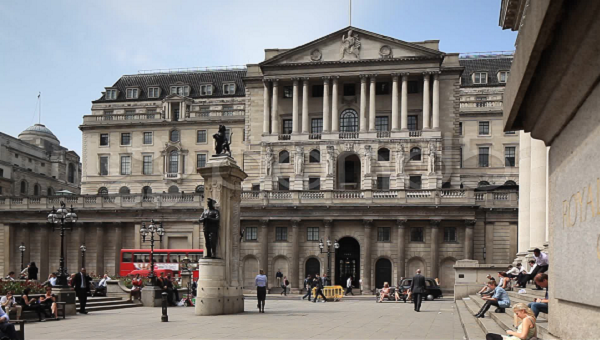August 6, 2015 – The Bank of England will deliver its keenly-awaited outlook on prospects for the economy today, amid mounting speculation that it could raise interest rates before the end of this year.
Its quarterly Inflation Report will for the first time be published alongside the Bank’s decision on rates for the month, as well as minutes disclosing how members of the Monetary Policy Committee (MPC) voted.
The MPC is expected to leave rates on hold for now at 0.5% – where they have been for more than six years.
But a number of economists expect a split in the nine-member committee for the first time this year, with a number of dissenters voting for an increase to 0.75%.
The Bank’s views in its quarterly report on the path of inflation will also be seen as critical. If policy-makers think inflationary pressures are building, amid accelerating wage growth, it will further fuel speculation that a rates rise is nearing.
A hike would spell higher repayments for mortgage borrowers and a glimmer of hope for savers who have seen the value of their nest eggs eroded by rock-bottom rates.
The Bank rate has remained the same since it was cut to 0.5% in March 2009 to help prop up the UK economy at the height of the financial crisis. It was last increased in July 2007 when it went up to 5.75%.
Until recently the next hike was pencilled in by the City for the middle of next year, but remarks from Bank governor Mark Carney and other officials have changed the picture.
Mr Carney said in a recent speech that a decision on a rise would “come into sharper relief around the turn of this year”.
The release of the Inflation Report, rates decision and minutes – all previously published on separate dates – has been dubbed “super Thursday” by Bank watchers because of the slew of information being made available simultaneously.
It comes after latest gross domestic product (GDP) figures showed the economy bouncing back from a weak start of the year to post 0.7% expansion in the second quarter.
Revisions by the Office for National Statistics (ONS) this week also showed that growth had been stronger than previously thought from 2011 to 2013 – with GDP performance to 2015 to be subjected to the revisions later this year.
Meanwhile, pay growth has accelerated to its strongest pace in five years.
Rate-setters will take into account potential pressures lifting costs as they target consumer price index (CPI) inflation at 2%.
Any signs that accelerating growth and wages could drive up CPI more quickly than expected will be seen as an indication that interest rates may have to go up sooner.
With latest figures showing inflation at zero there is little pressure to do this immediately but policy-makers will have to weigh up the impact of their decisions on the economy over the next couple of years.
They currently expect CPI to start turning higher later this year as the impact of falling oil and food prices fade.
However some economists point to key factors that could put downward pressure on inflation, including a renewed slump in the oil price and a second 5% cut in household bills announce by British Gas.
Also, latest economic surveys for July have suggested a slowdown in the pace of growth since the second quarter.
In addition, official data recently showed the first rise in unemployment for more than two years while the strength of the pound has weighed on the price of imported goods.
The prospect of a return to negative inflation as seen earlier this year is unlikely to provide the ideal environment for an interest rates hike.
Vicky Redwood, chief UK economist at Capital Economics, said: “This month’s MPC vote will probably be split for the first time this year.
“While only a minority will vote for a rate rise, the risk of a hike this year has risen. Indeed, Mark Carney will probably use the inflation report to continue to prepare expectations for a hike.
“But the majority of the committee will want to wait for inflation to pick up before considering a rise.”

